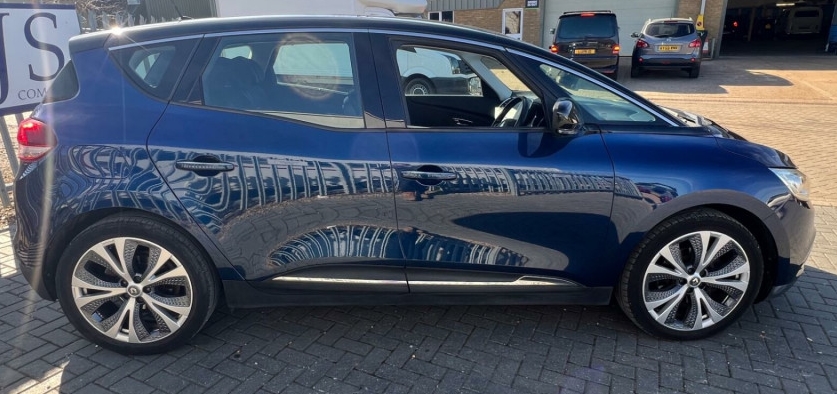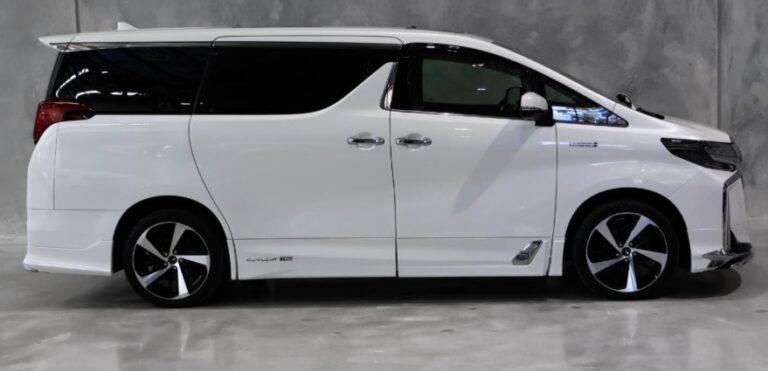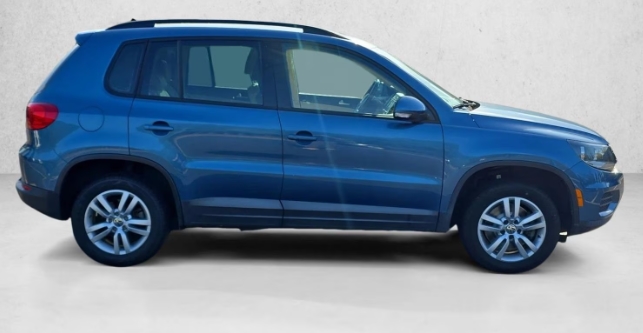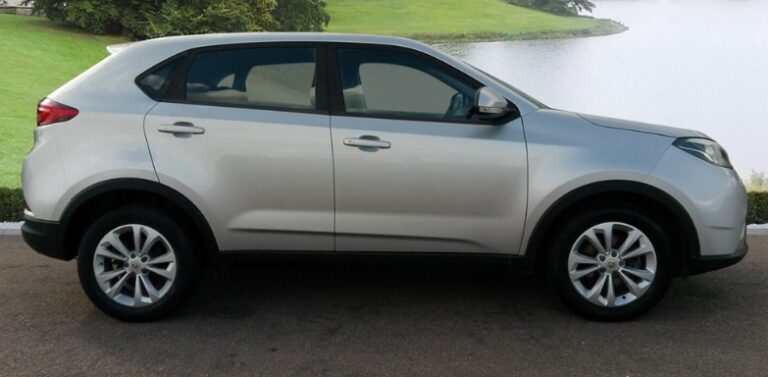The Evolution of the Renault Scenic
The Renault Scenic is a pioneering compact MPV (multi-purpose vehicle) that has played a significant role in shaping the European automotive landscape since its debut in the late 1990s. Known for its innovative design, versatile interior, and practical features, the Scenic has evolved through multiple generations, each bringing new technological advancements, design philosophies, and trim levels to meet changing consumer demands.
This article provides a detailed chronological overview of the Renault Scenic’s evolution, including production years, model variants, and trim levels across its history.
First Generation (1996–2003): The Birth of a Segment
Introduction and Launch
Renault launched the first-generation Scenic in 1996 as a response to the rising popularity of compact MPVs, a segment that was still relatively new at the time. Its design was based on the Renault Clio platform, but it featured a taller, more spacious body with a focus on practicality and family-friendliness.
Production Years: 1996–2003
Key Features:
- Design: Rounded, aerodynamic shape with a high roofline.
- Engine Options: Initially offered a range of petrol engines (1.4L, 1.6L, 2.0L) and diesels (1.9L turbo-diesel).
- Interior: Flexible seating with sliding rear seats, fold-flat seats, and a large cargo capacity.
- Drive Options: Front-wheel drive, with some models offering an all-wheel-drive system (in certain markets).
Models and Trim Levels:
In its early years, the First Generation Scenic was available in various trim levels, often reflecting the market-specific branding:
- RXE: Base model with essential features.
- RT: Mid-level trim offering additional comfort and convenience features.
- RXE Plus/RT Plus: Variants with minor upgrades.
- Vx and Privilege: Higher trims introduced later with features like power windows, better audio systems, and alloy wheels.
Special Editions:
- Notable early editions included limited runs like the “Initiale” (luxury-oriented) and “Alize” versions, mainly in France.
Second Generation (2003–2009): The Scenic Reimagined
Introduction and Design
Launched in 2003, the second-generation Scenic marked a significant evolution in design, with a more refined, modern appearance and improved aerodynamics. This generation emphasized comfort, advanced safety features, and technological enhancements.
Production Years: 2003–2009
Key Features:
- Design: More streamlined and sporty, with a longer wheelbase for increased interior space.
- Engines: Expanded petrol options (including 1.4L, 1.6L, 2.0L, 2.0L turbocharged) and a broader diesel lineup (1.5L dCi, 1.9L dCi, 2.0L dCi).
- Interior: Improved materials, more ergonomic seats, and greater flexibility with sliding and folding seats.
- Technology: Introduction of cruise control, climate control, and optional navigation systems.
- Safety: Enhanced safety features including front airbags, side airbags, and stability control.
Model and Trim Levels:
Early models offered basic trims, but by the mid-2000s, Renault introduced more defined levels:
- Expression: Entry-level trim with basic features.
- Confort: Mid-range with added comfort features like electric windows, better audio.
- Privilege: Top-tier trim offering leather seats, alloy wheels, and advanced infotainment.
- Initiale: The luxury trim, introduced later, featuring premium materials, parking sensors, and upgraded audio systems.
Special Editions:
- Wave Edition: Focused on style, with unique paint options and alloy wheels.
- Initiale Paris: A luxury-focused variant with premium interior features and exclusive styling cues.
Third Generation (2016–2022): Modernization and Technology
Introduction and Design
After a hiatus, Renault revived the Scenic nameplate in 2016 with a completely redesigned third-generation model, built on the Renault–Nissan CMF modular platform. The new Scenic adopted a more SUV-like stance, blending MPV practicality with crossover styling cues.
Production Years: 2016–2022
Key Features:
- Design: Bold, sporty exterior with high-mounted LED headlights, a prominent grille, and a raised stance.
- Engines: A range of efficient petrol engines (1.0L TCe, 1.3L TCe), and diesel options (1.5L dCi, 1.7L dCi). Hybrid variants were introduced later.
- Interior: Premium materials, digital displays, and advanced driver-assistance systems like lane departure warning, adaptive cruise control, and parking assist.
- Technology: Large touchscreen infotainment with smartphone connectivity, navigation, and multiple USB ports.
- Practicality: Flexible seating arrangements with 5 or 7 seats in the Grand Scenic variant.
Model and Trim Levels:
Renault streamlined the trim structure for this generation, offering a more straightforward lineup:
- Zoe: Entry-level, focusing on affordability.
- Expression: Basic features with essential comfort.
- Iconic: Mid-level, with additional amenities.
- S Edition / S-Edition: Sportier styling package.
- Initiale Paris: The highest trim, emphasizing luxury and advanced features.
Special Editions:
- Black Edition: Emphasizing sporty aesthetics with black accents.
- R.S. Line: Performance-inspired styling and equipment.
Hybrid and Electric Variants:
- The Renault Scenic E-Tech hybrid was introduced, emphasizing eco-friendly technology with plug-in hybrid options, aligning with Renault’s push toward electrification.
Fourth Generation (2023–Present): The New Era
Introduction and Design
The latest Renault Scenic, unveiled in 2023, continues to evolve with a focus on sustainability, advanced technology, and versatility. It features a more refined design, incorporating elements of Renault’s modern SUV lineup.
Production Years: 2023–present
Key Features:
- Design: Elegant, aerodynamic profile with sleek LED lighting signatures and a modern grille.
- Powertrains: Fully electric variants, including the new E-Tech Electric, and traditional hybrid options.
- Interior: Digital cockpit, augmented reality head-up display, and smart connectivity features.
- Safety: State-of-the-art driver-assistance systems, including semi-autonomous driving capabilities.
Model and Trim Levels:
The current lineup is more streamlined, emphasizing technology and eco-friendliness:
- Equilibre: Base trim with essential features.
- Techno: Mid-range, adding advanced infotainment and driver aids.
- Initiale Paris: Top-tier luxury and technology suite.
- E-Tech Versions: Electric and hybrid options with varying trim levels, often aligning with the above packages.
.
Did you know that USA Auto Racing Events are different from other parts of the world?
.
Summary of the Renault Scenic’s Evolution
| Generation | Years Produced | Notable Features | Trim Levels & Variants |
|---|---|---|---|
| 1st | 1996–2003 | Pioneering MPV, flexible interior | RXE, RT, Vx, Privilege, Initiale, Alize |
| 2nd | 2003–2009 | Modern design, safety tech | Expression, Confort, Privilege, Initiale, Wave, Paris |
| 3rd | 2016–2022 | SUV-inspired styling, tech-focused | ZOE, Expression, Iconic, S Edition, Initiale Paris |
| 4th | 2023–present | Electric and hybrid focus | Equilibre, Techno, Initiale Paris, E-Tech variants |
Conclusion
The Renault Scenic has consistently adapted to market trends and technological advancements over its nearly three decades of production. From its humble beginnings as a practical family MPV to its current iteration emphasizing electrification and connectivity, the Scenic exemplifies Renault’s commitment to innovation and versatility.
Throughout its history, the Scenic has offered a range of trim levels and special editions tailored to diverse customer preferences, balancing affordability with luxury and performance. Its evolution reflects broader shifts in automotive design, safety, and environmental consciousness, ensuring its place in the annals of automotive history as a segment-defining vehicle.
Whether as a compact MPV, a crossover-inspired model, or a fully electric family vehicle, the Renault Scenic remains a testament to Renault’s ingenuity and adaptability in the competitive automotive industry.







